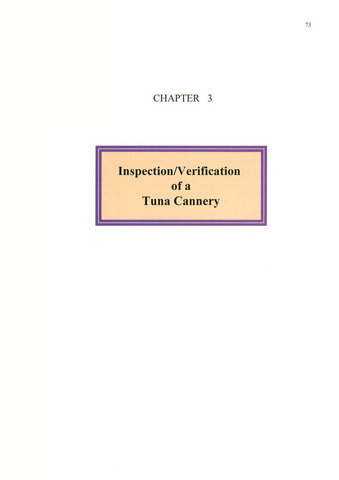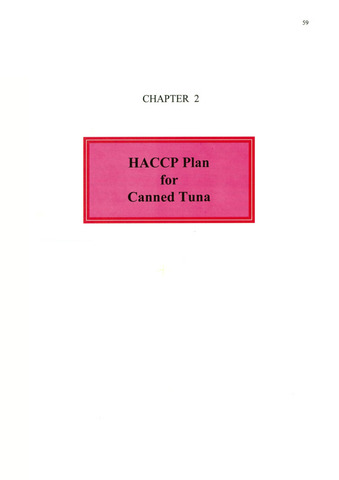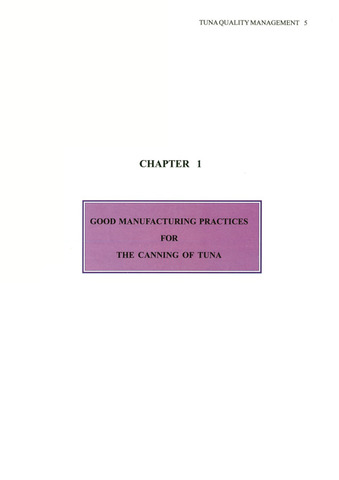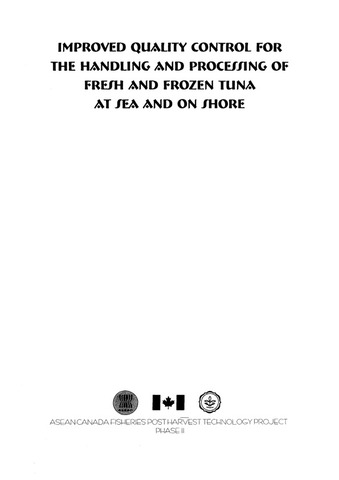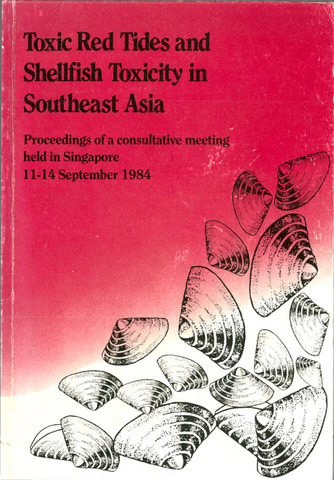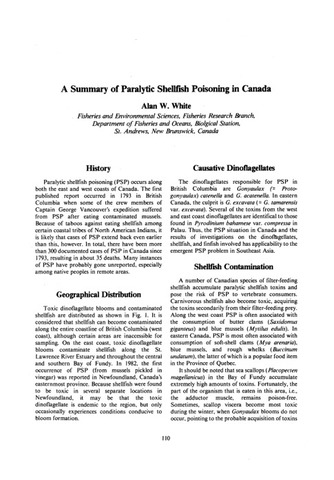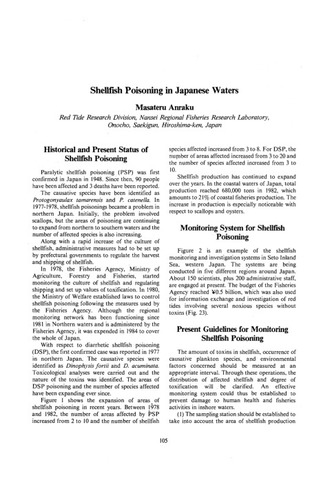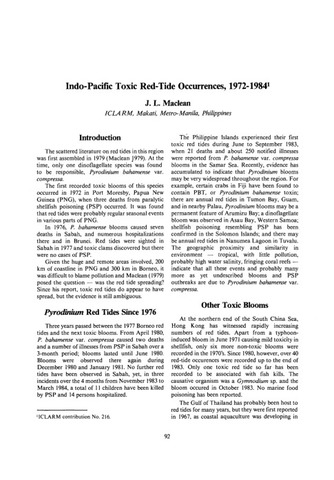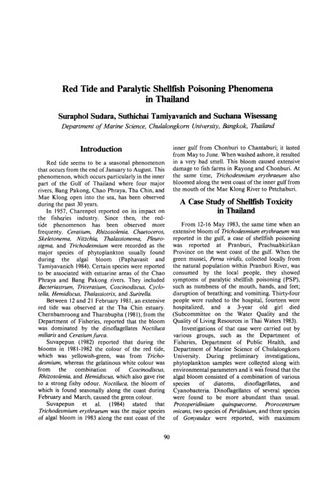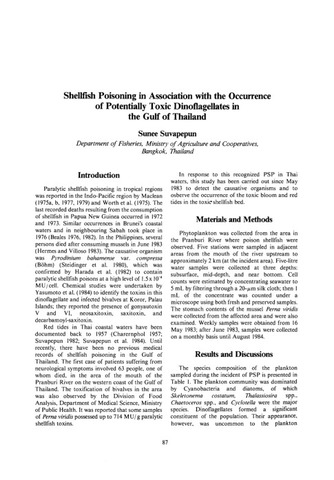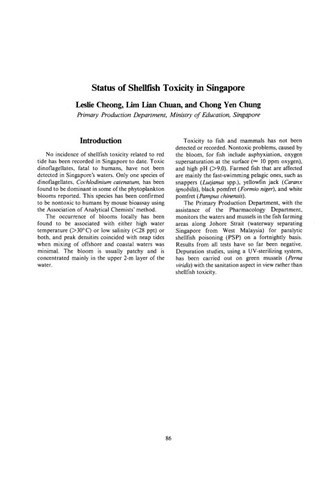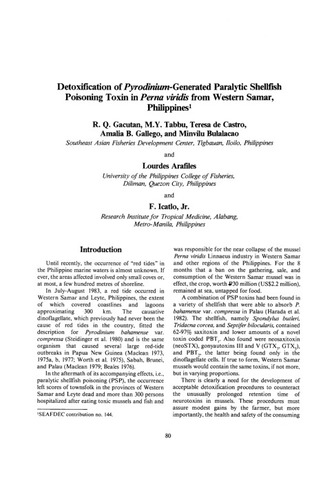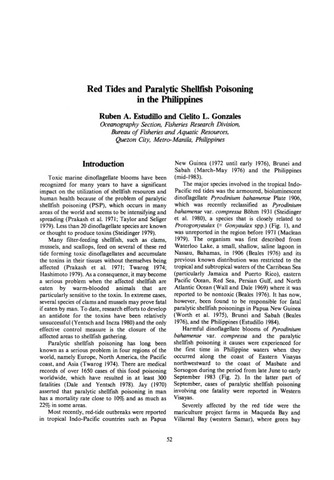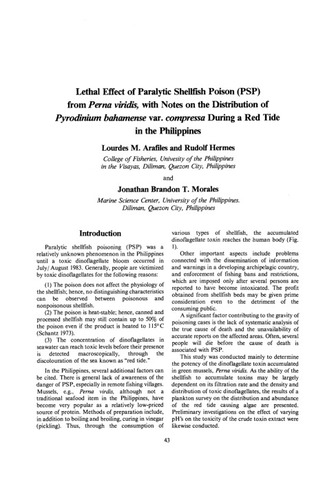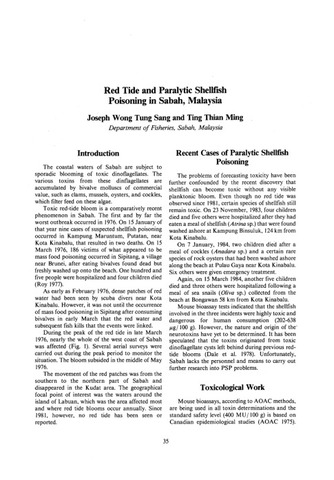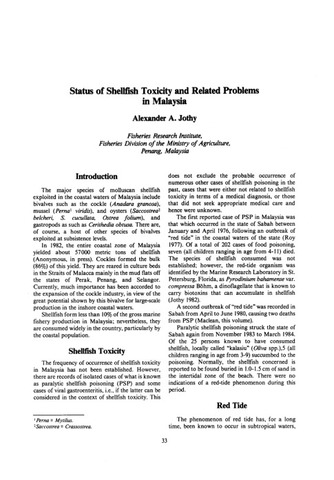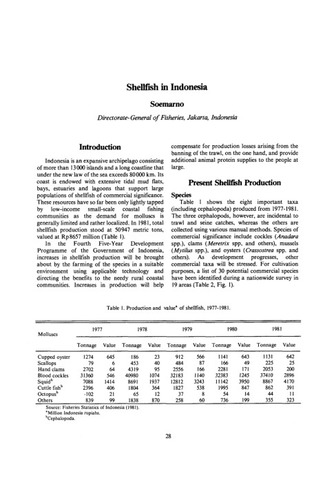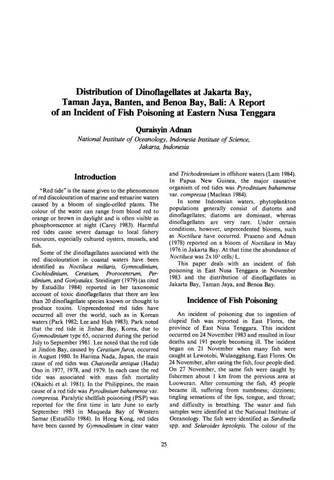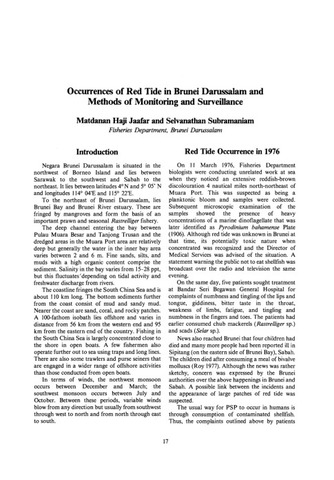Enhancing Quality and Safety of Fish Products: Recent submissions
Now showing items 21-40 of 42
-
Inspection/verification of a tuna cannery
(Marine Fisheries Research Department, Southeast Asian Fisheries Development Center, 1995) -
HACCP plan for canned tuna
(Marine Fisheries Research Department, Southeast Asian Fisheries Development Center, 1995) -
Good manufacturing practices for the canning of tuna
(Marine Fisheries Research Department, Southeast Asian Fisheries Development Center, 1995) -
Improved quality control for the handling and processing of fresh and frozen tuna at sea and on shore
(Marine Fisheries Research Department, Southeast Asian Fisheries Development Center, 1997) -
Toxic red tides and shellfish toxicity in southeast Asia: Proceedings of a consultative meeting held in Singapore 11-14 September 1984
(Marine Fisheries Research Department, Southeast Asian Fisheries Development Center; International Development Research Centre, 1984)The occurrence of toxic red tides and paralytic shellfish poisoning (PSP) have become more frequent in Southeast Asian waters in recent years. A consultative meeting was organised by the Southeast Asian Fisheries Development ... -
A summary of paralytic shellfish poisoning in Canada
(Marine Fisheries Research Department, Southeast Asian Fisheries Development Center; International Development Research Centre, 1984)Paralytic shellfish poisoning occurs along both the east and west coasts of Canada. Since 1973 there have been more than 300 documented cases of paralytic shellfish poisoning, resulting in about 35 deaths. Causative ... -
Shellfish poisoning in Japanese waters
(Marine Fisheries Research Department, Southeast Asian Fisheries Development Center; International Development Research Centre, 1984)Under the supervision of the Fisheries Agency, each prefectural government has the responsibility of carrying out monitoring programs. Although some problems exist, monitoring operations have been proceeding successfully. ... -
Indo-Pacific toxic red-tide occurrences, 1972-1984
(Marine Fisheries Research Department, Southeast Asian Fisheries Development Center; International Development Research Centre, 1984)A brief review is made of the incidences of red tides and paralytic shellfish poisoning in the Indo-Pacific region during the period 1972-84, indicating the organisms involved in the toxicity. -
Red tide and paralytic shellfish poisoning phenomena in Thailand
(Marine Fisheries Research Department, Southeast Asian Fisheries Development Center; International Development Research Centre, 1984)A report is made of the first incidence occurring of paralytic shellfish poisoning in Thailand in May 1983, following an extensive bloom of Trichodesmium erythraeum. Investigations undertaken regarding the source of the ... -
Shellfish poisoning in association with the occurrence of potentially toxic dinoflagellates in the Gulf of Thailand
(Marine Fisheries Research Department, Southeast Asian Fisheries Development Center; International Development Research Centre, 1984)A study was conducted to detect the causative organisms of paralytic shellfish poisoning in Thailand waters and to observe the occurrence of the toxic bloom and red tides in the toxic shellfish beds. -
Status of shellfish toxicity in Singapore
(Marine Fisheries Research Department, Southeast Asian Fisheries Development Center; International Development Research Centre, 1984)No incidence of shellfish toxicity related to red tides has been recorded in Singapore to date. Only one species of dinoflagellate, Cochlodinium catenatum, has been found dominant in some of the phytoplankton blooms reported. ... -
Detoxification of pyrodinium-generated paralytic shellfish poisoning toxin in Perna viridis from western Samar, Philippines
(Marine Fisheries Research Department, Southeast Asian Fisheries Development Center; International Development Research Centre, 1984)The results are presented of procedures for the detoxification of paralytic shellfish poisoning toxin using ozone, chlorine and PVP-iodine. Findings indicate ozone and PVP-iodine to effectively inactivate the toxins isolated ... -
Red tides and paralytic shellfish poisoning in the Philippines
(Marine Fisheries Research Department, Southeast Asian Fisheries Development Center; International Development Research Centre, 1984)Monitoring and investigative work undertaken in the Philippines regarding dinoflagellate blooms are described. Chronological observations of the occurrence of red tides, aerial surveys, spatial distribution of the ... -
Lethal effect of paralytic shellfish poison (PSP) from Perna viridis, with notes on the distribution of Pyrodinium bahamense var. compressa during a red tide in the Philippines
(Marine Fisheries Research Department, Southeast Asian Fisheries Development Center; International Development Research Centre, 1984)A study was conducted to determine the potency of the dinoflagellate toxin accumulated in green mussels, Perna viridis, in the Philippines. The results are also presented of a plankton survey undertaken in order to study ... -
Red tide and paralytic shellfish poisoning in Sabah, Malaysia
(Marine Fisheries Research Department, Southeast Asian Fisheries Development Center; International Development Research Centre, 1984)A brief account is given of recent cases of paralytic shellfish poisoning in Sabah, Malaysia, and toxicological studies undertaken. Hydrography surveys, underwater observations after the occurrence of the red tides and ... -
Status of shellfish toxicity and related problems in Malaysia
(Marine Fisheries Research Department, Southeast Asian Fisheries Development Center; International Development Research Centre, 1984)A brief review is made of the current status regarding shellfish toxicity and red tide occurrence in Malaysia. -
Shellfish in Indonesia
(Marine Fisheries Research Department, Southeast Asian Fisheries Development Center; International Development Research Centre, 1984)An account is given of present shellfish production in Indonesia, indicating the species involved, collection methods, production and value, and utilization. -
Distribution of dinoflagellates at Jakarta Bay, Taman Jaya, Banten, and Benoa Bay, Bali: A report of an incident of fish poisoning at eastern Nusa Tenggara
(Marine Fisheries Research Department, Southeast Asian Fisheries Development Center; International Development Research Centre, 1984)A description is given of an incident of fish poisoning in East Nusa Tenggana in November 1983, which resulted from a red tide. Sampling studies were made to investigate the distribution of dinoflagellates in Jakarta Bay, ... -
Occurrences of red tide in Brunei Darussalam and methods of monitoring and surveillance
(Marine Fisheries Research Department, Southeast Asian Fisheries Development Center; International Development Research Centre, 1984)Details are given of red tides which occurred in Brunei Darussalam, 1976 and 1980. Methods of monitoring are described which included plankton sampling, aerial surveillance and toxicity tests. -
Analytical Methods for Estimation Freshness of Fish
(Training Department, Southeast Asian Fisheries Development Center, 1978-09)It needs hardly be stressed that freshness is one of the essential factors of fisheries products. The quality of fresh fish as well as that of processed fisheries products depends upon the freshness of fish when it is ...

